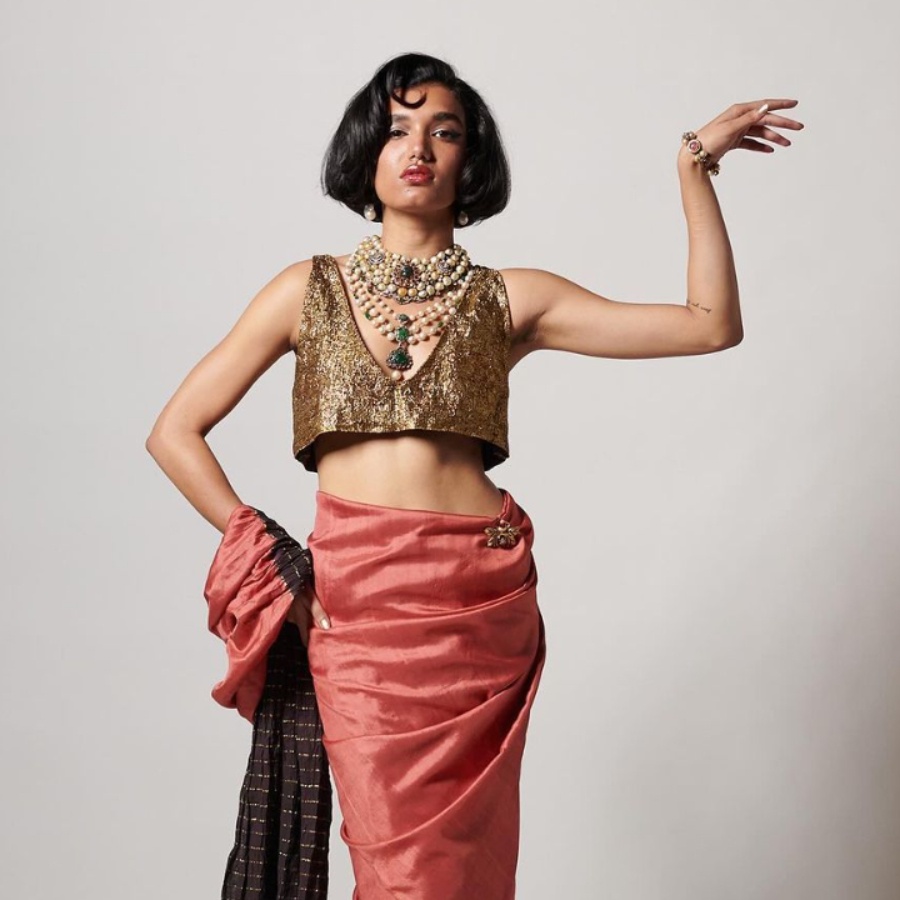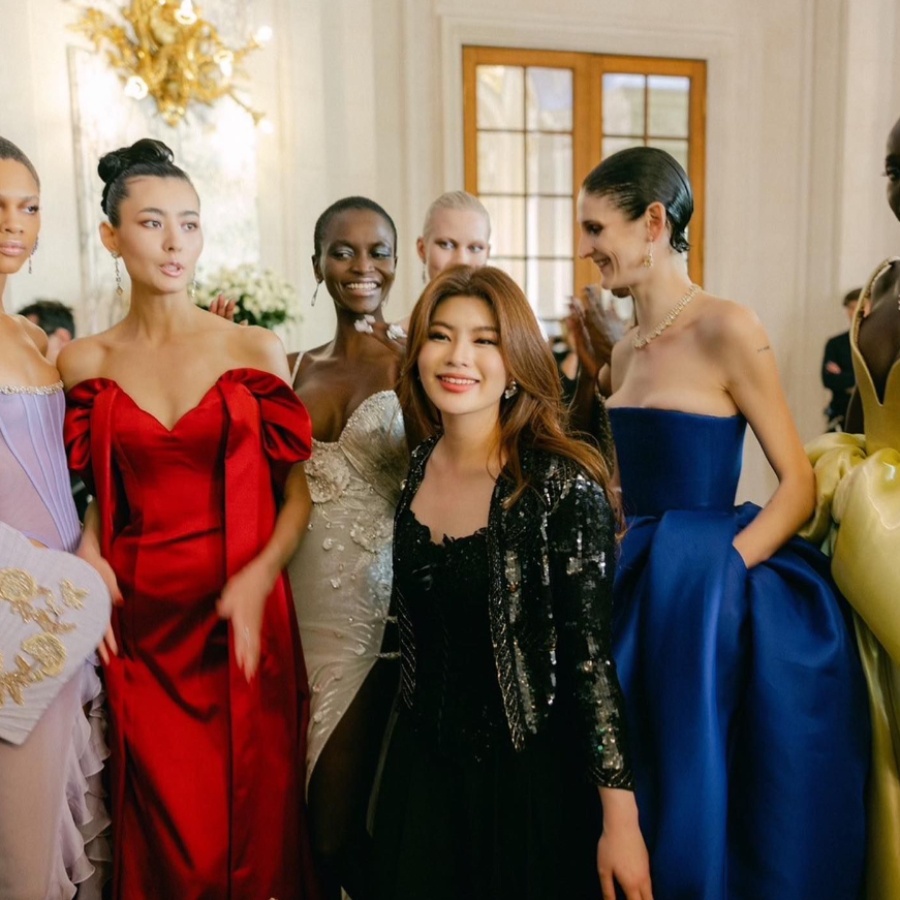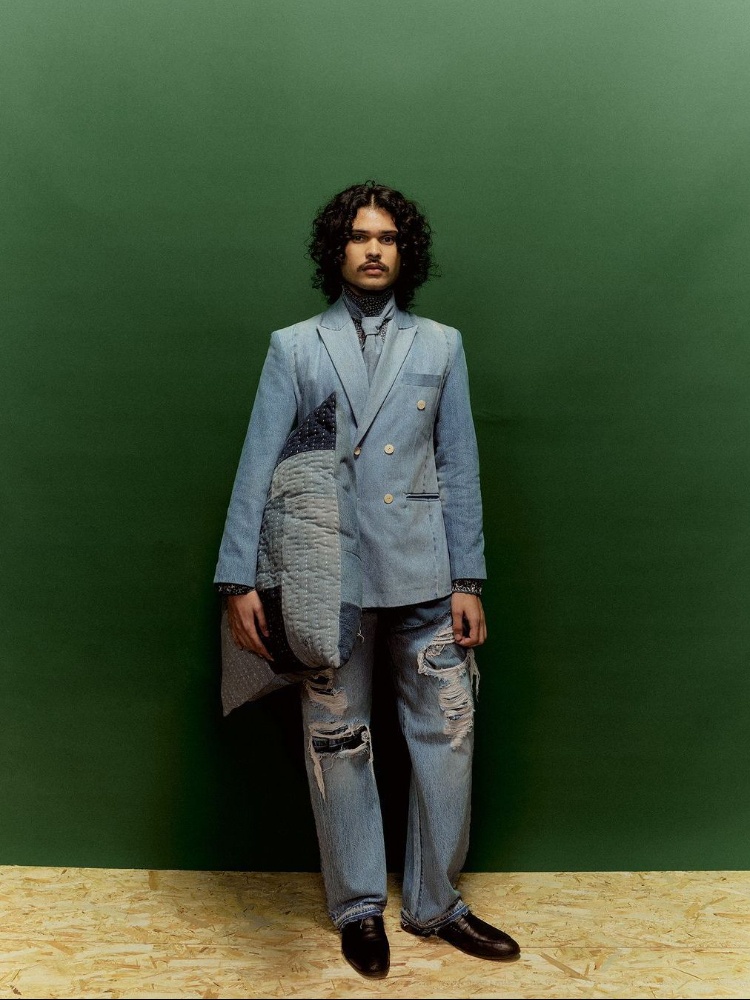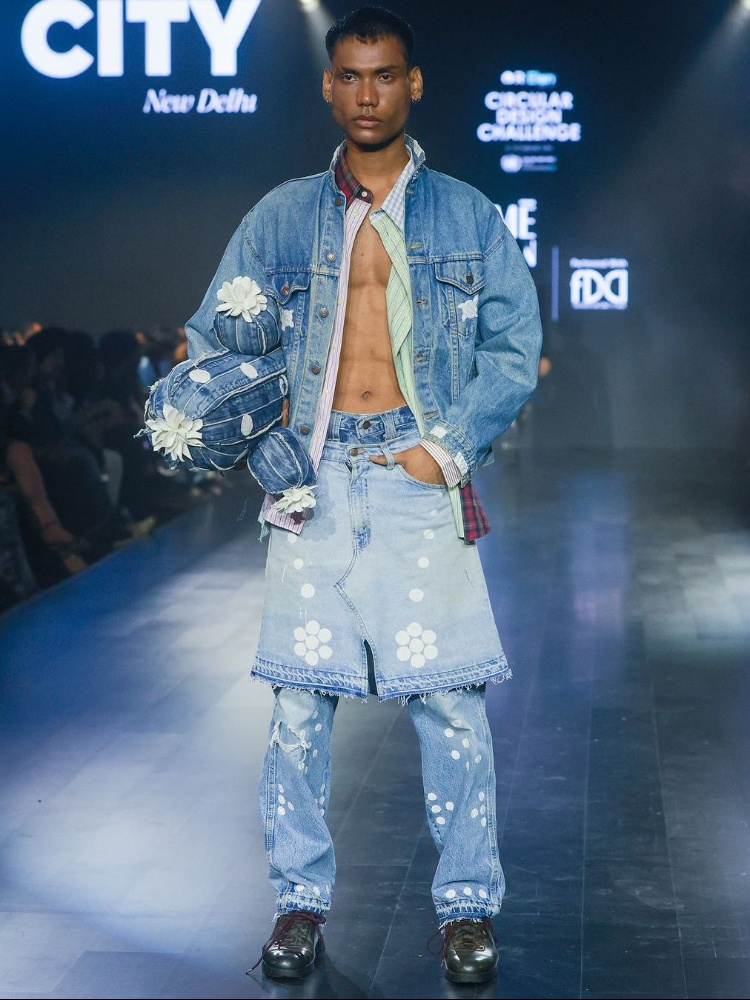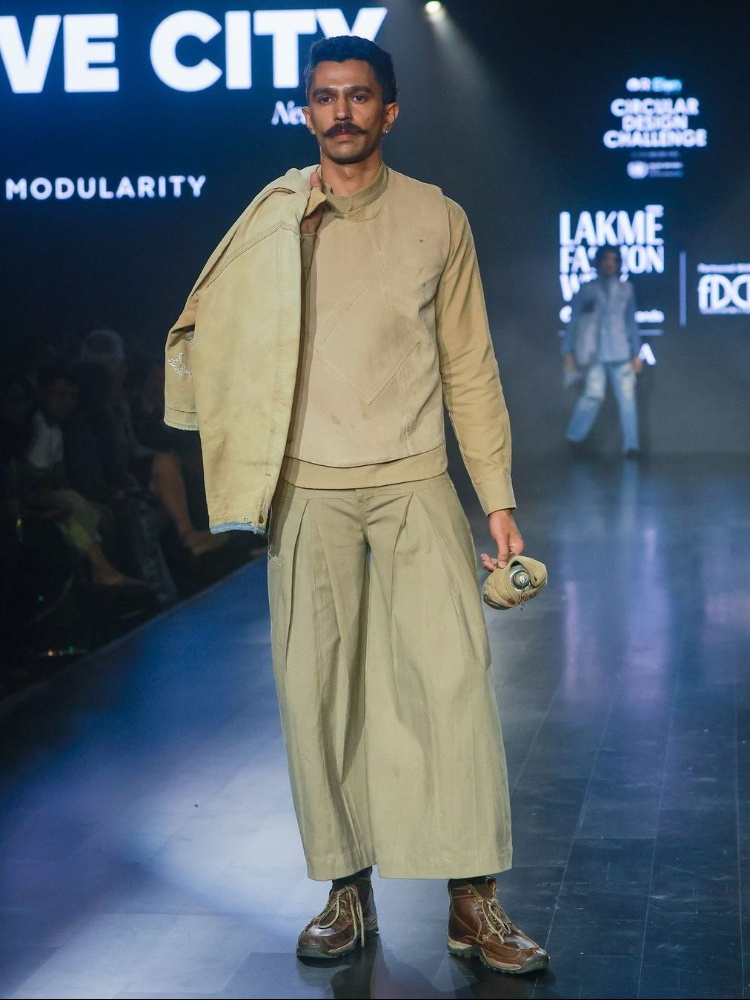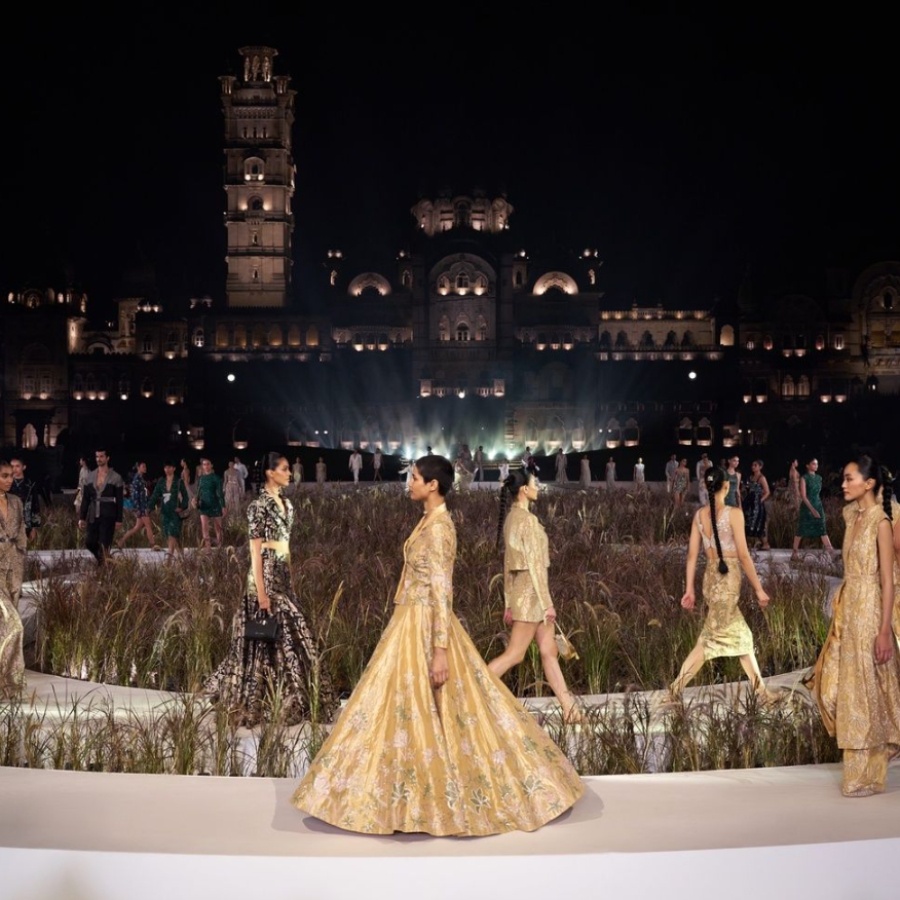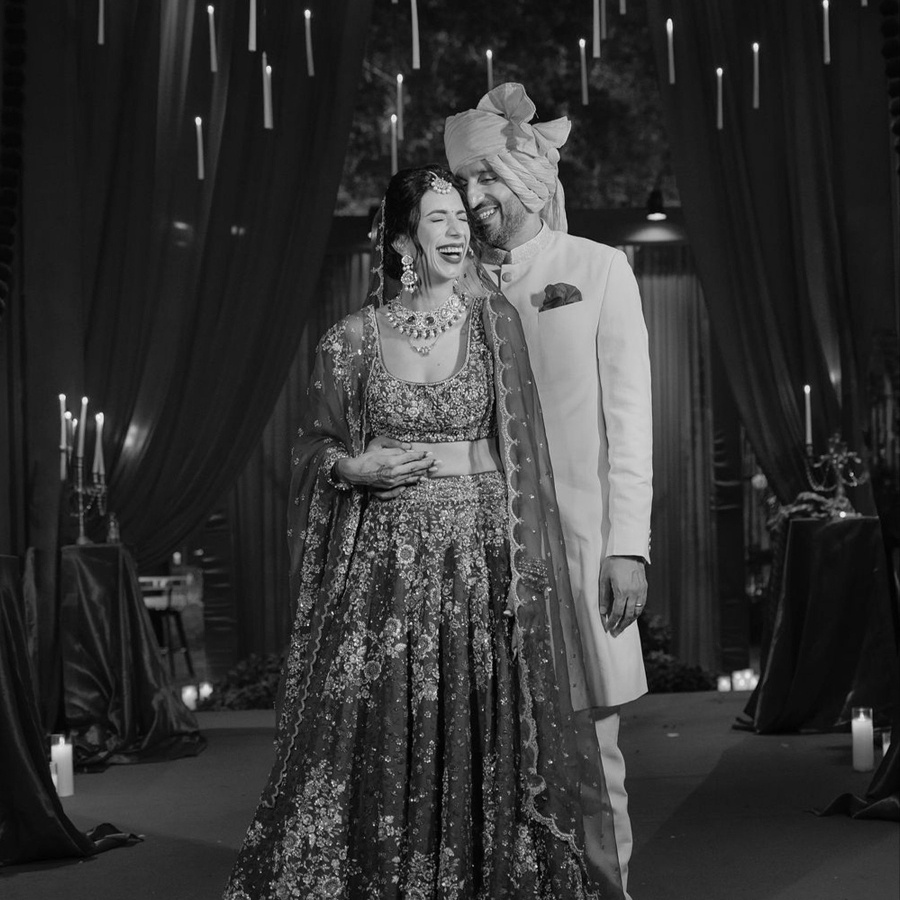In a loud season laced with fashion OGs, there was, if you paid attention, a quiet, but steady hum—the sound of newbies entering the fashion world. Three labels in particular, who debuted at Lakmé Fashion Week, showcased collections that had a distinct point of view and created a visual language unique to their designers. Their aesthetics ran the gamut from maximalist to upcycled camo, and each managed to have an impact. Below, the new designers to watch.
The future of fashion looks maximal
Designer Ankur Verma’s penchant for all things oversized began when he was just pint sized. “I’ve been obsessed with wearing my dad’s clothes since I was a child. I loved how oversized they were, and gradually, I started wearing them to college. Back then, people would make fun of me for wearing such huge clothes.” But the world has caught up, and with his label, TIL, Verma’s larger-than-life vision has room to expand.
At his recent Lakmé Fashion Week showcase, Verma’s models were engulfed in exaggerated layers. Macramé dresses, asymmetrical shirts, and power-shouldered crop tops were worn under embroidered vests, kimono jackets, and wide-collar coats. “I’m drawn to silhouettes that emphasise layering and versatility,” Verma says. “I love creating pieces that can be styled in multiple ways, allowing the wearer to express themselves freely. I usually work with upcycled fabrics, incorporating katran and patchwork, and experimenting with knitting, weaving, and embroidery.”

The brand’s name, which is the Hindi word for mole, was inspired by Verma’s late grandmother. “I was obsessed with my grandmother’s skin. I used to sleep holding her hand, feeling the texture of her skin, and after I lost her, that connection stayed with me. Back in 2021, during the pandemic, I was reminiscing about how Dadi would always say, ‘Agar haath mein til hai, toh paisa aayega’ (If you have a mole on your hand, money will come). Earlier, it used to make me laugh, but in that moment, it gave me strength and hope. Then it hit me—why not name my label TIL? And from that thought, the brand was born.” He adds, “TIL tries to draw from body textures like freckles, moles, and wrinkles, which represent the raw beauty of imperfections.”
You’ll find the roughness Verma refers to in his prints that resemble blurred watercolour landscapes, the scribble of thread work, and the collage-like mashup of colours. But through it all, you see that the multiple layers are all carefully tailored and each piece is refined enough to be worn individually. That sense of balance is pivotal to the maximalist aesthetic, and it’s what makes Verma one to watch.


